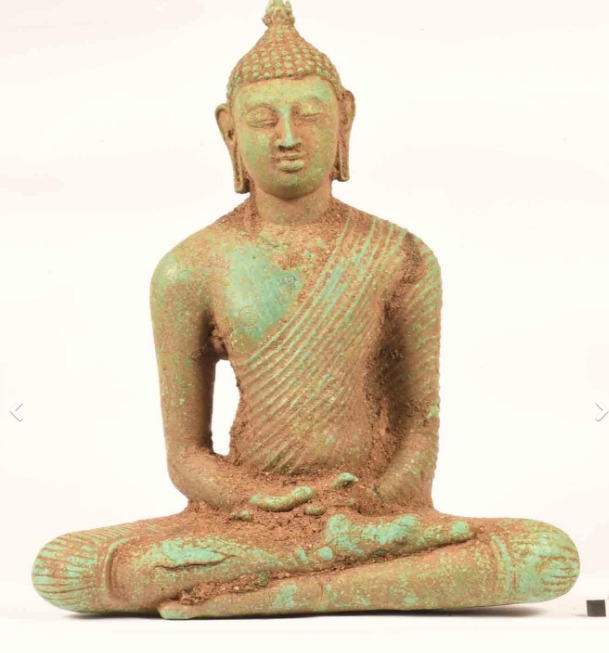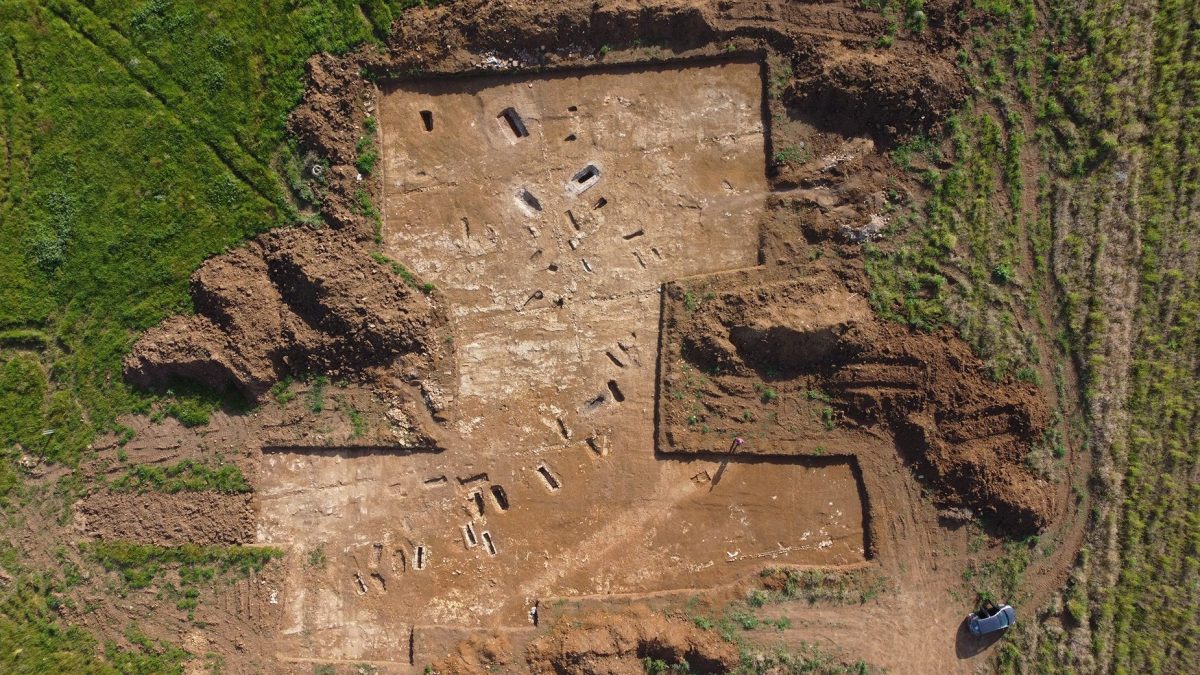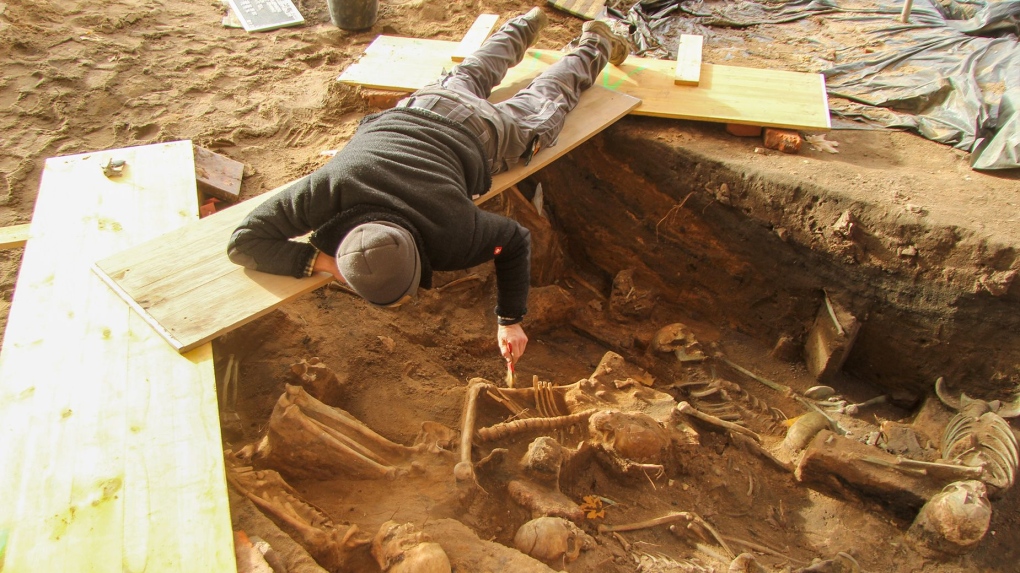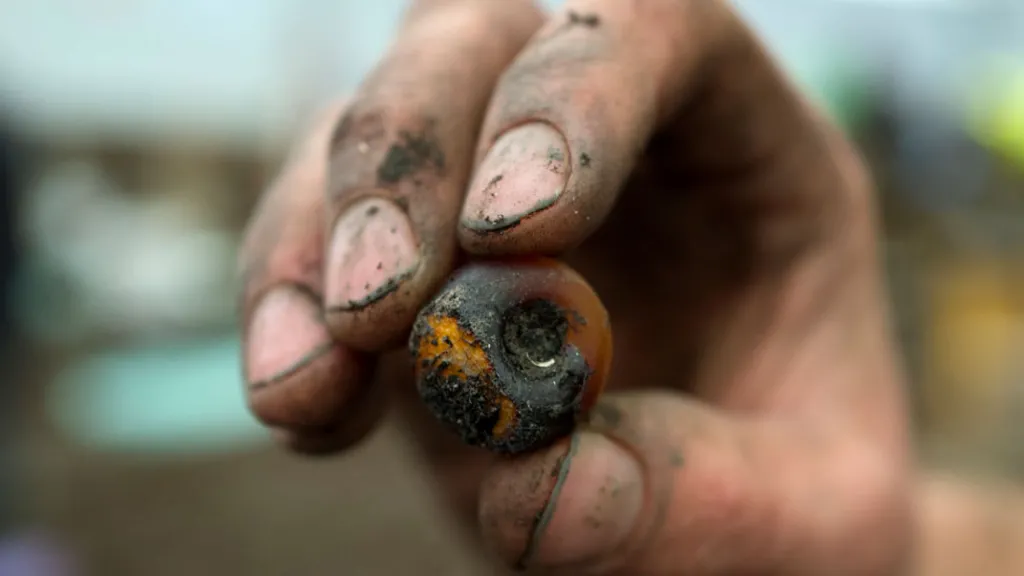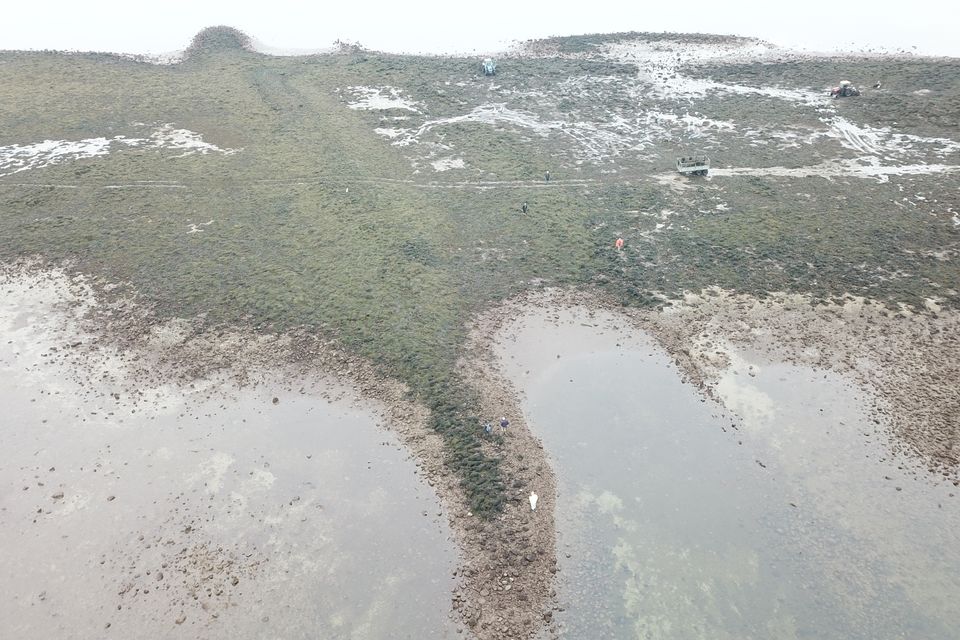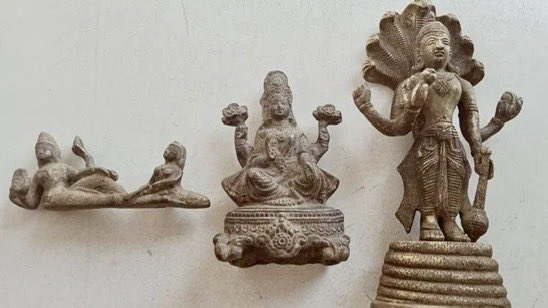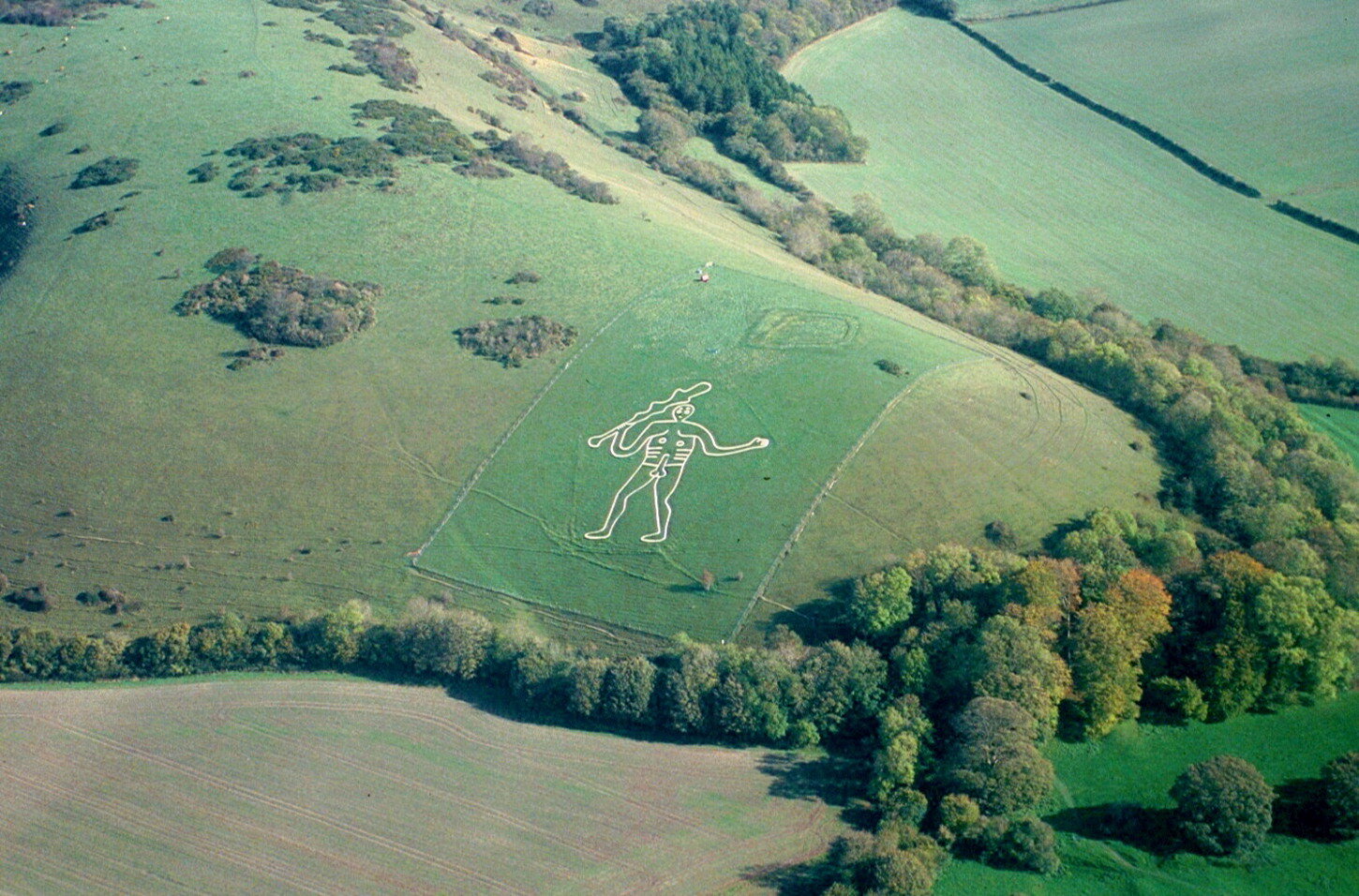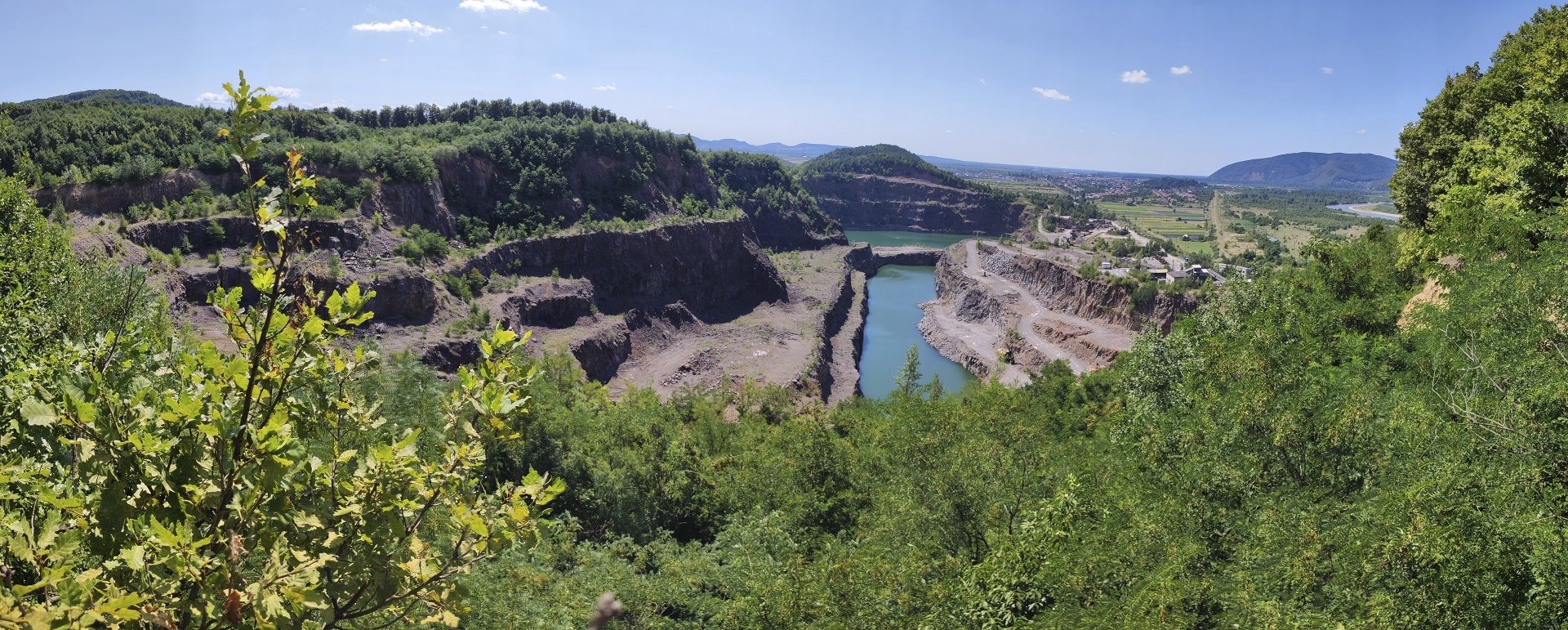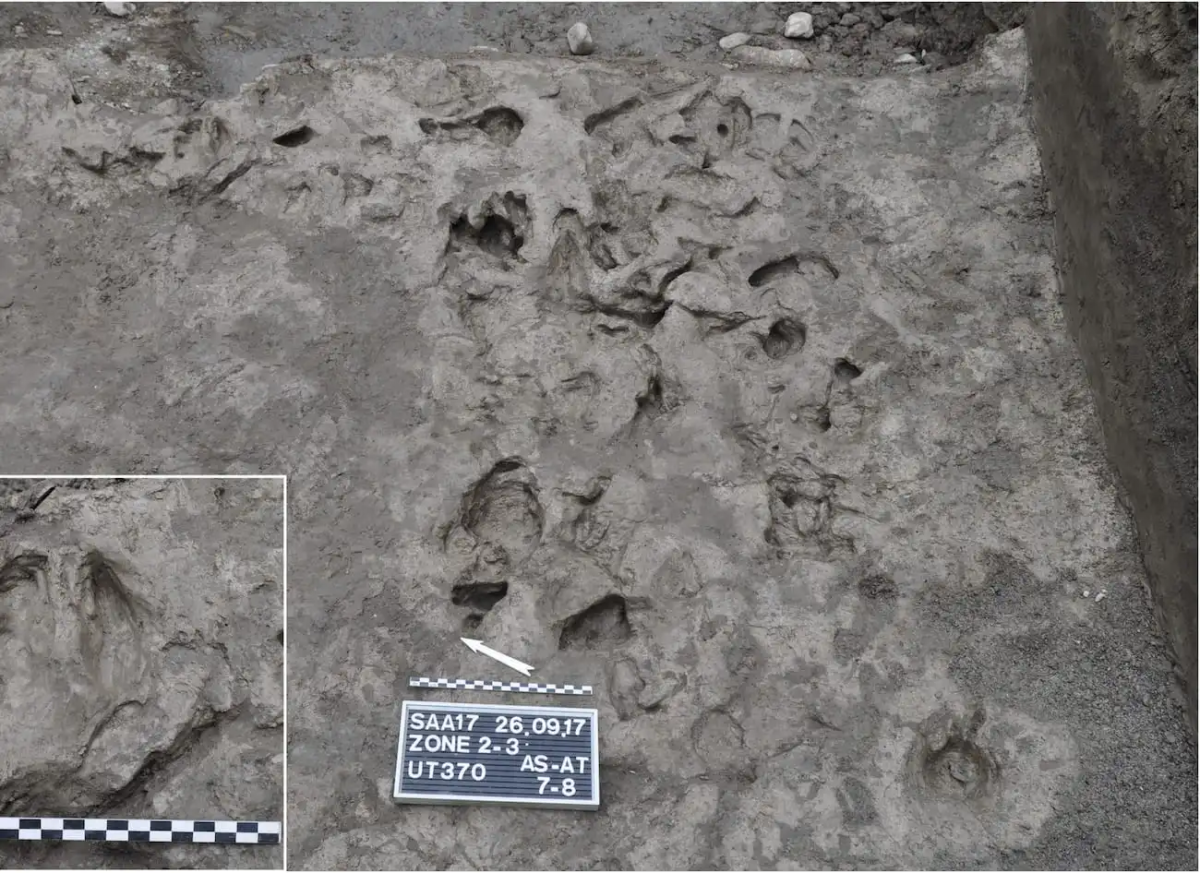The seated Buddha statue was discovered by chance in a mound excavated in a paddy field where soil for the production of bricks for the Deegawapiya Stupa Conservation Project was being dug up.
This statue, which is in very good condition, is made of some metal. Although it is not possible to state the exact period, according to the features of the statue, it appears that it belongs to the post-Anuradhapura period.
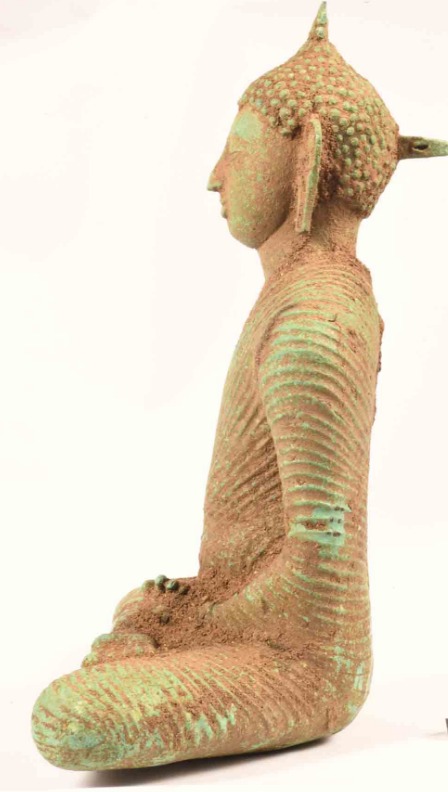
According to the measurements, the height is 35 cm, and the width of the seat is 30 cm. The height from waist to arm is 18 cm, from arm to headdress is 12 cm, from the hair-knot (Ushnisha) to the Siraspatha (headdress) is 3 cm whereas the height from waist to knee is 18 cm.
The Buddha is seated in virasana and displays the Dhyana mudra (gesture of meditation) The garments of the image are with folds, and the statue is full of artistic features.
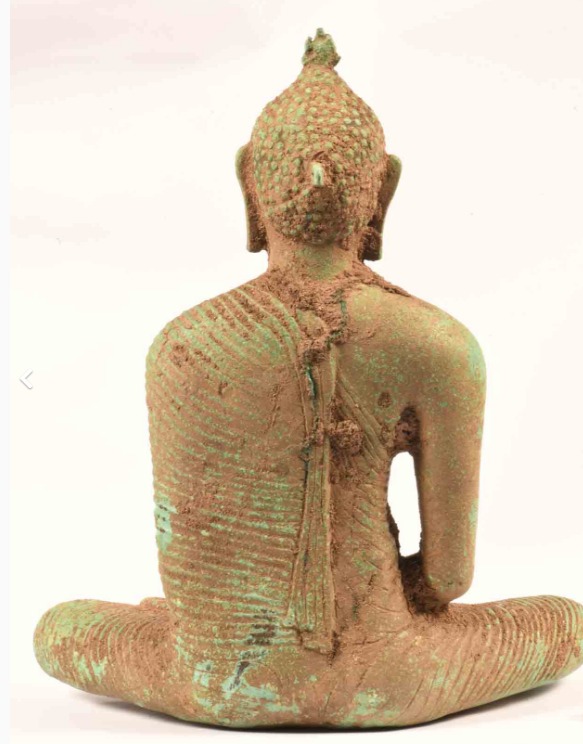
In particular, the fine proportional accuracy of the face, the hair-knot feature, and a five-leafed headdress (Siraspatha ) can be identified. Curly hair (Kundalakara), half eyes, smile (Mandasmitha), thick lips, and long earlobes (Lambhakarana) are well depicted. The nipple area is designed in Padmakara (Full lotus) style. The robe is worn on one shoulder (Ekansha Parupana) and the folds of the robe are created quite thickly. It is possible to think that the Uththama Dashathala of statue-making art (Chithrakarmashastra) may have followed.
This statue, identified by the former Regional Assistant Director of Ampara/Batticaloa, Mr. M. G. Ratnapala, has been handed over to the Chemical Conservation Division of the Sri Lanka Archeology Department for chemical conservation under the supervision of the current Regional Assistant Director of Ampara/ Batticaloa, Mr. D.S.A Munasinghe.
Siddhartha Gautama (Buddha)
Buddha, also known as Siddhartha Gautama, was a philosopher and spiritual leader who lived in India in the 6th century BC. He is considered the founder of Buddhism and is the founder of the world’s fourth largest religion with approximately 500 million followers.
Siddhartha Gautama (Buddha) was born in 563 BC in the Kingdom of Kapilavastu (present-day Nepal).
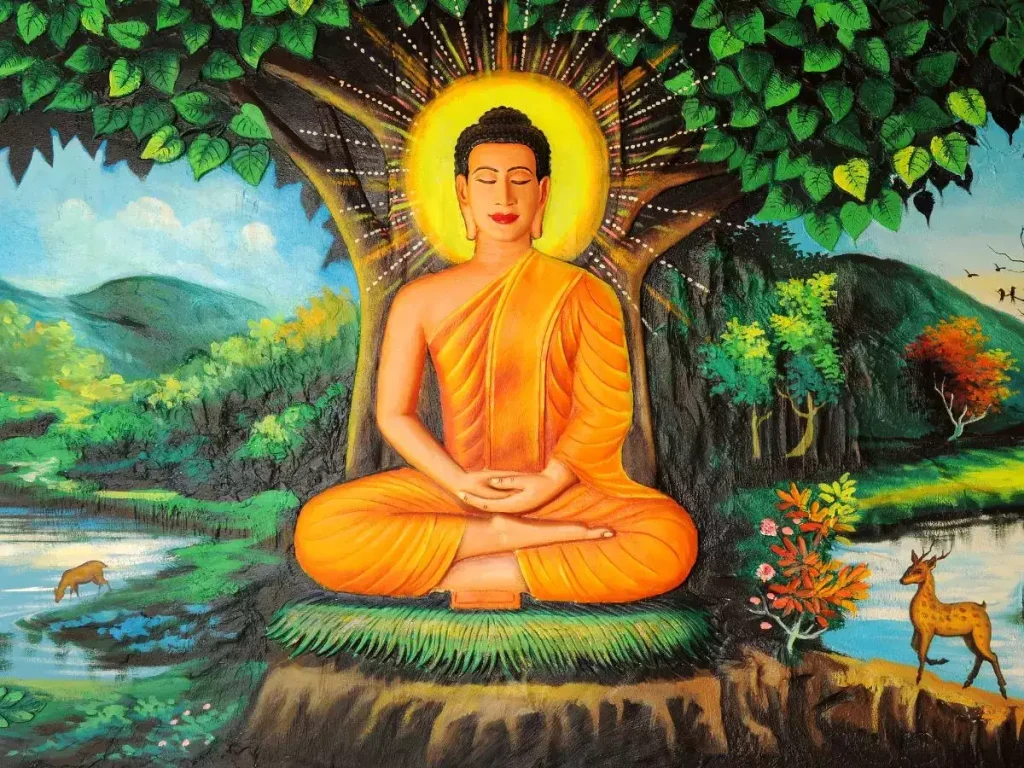
He lived a life of wealth and luxury, but realized that worldly pleasures were unsatisfying.
At the age of 29, he left the palace and began his spiritual quest. For six years he practiced meditation and asceticism. At the age of 35 he attained enlightenment under the Bodhi tree.
He devoted the remaining 45 years to spreading his teachings. He died in Kushinagara in 483 BC.

